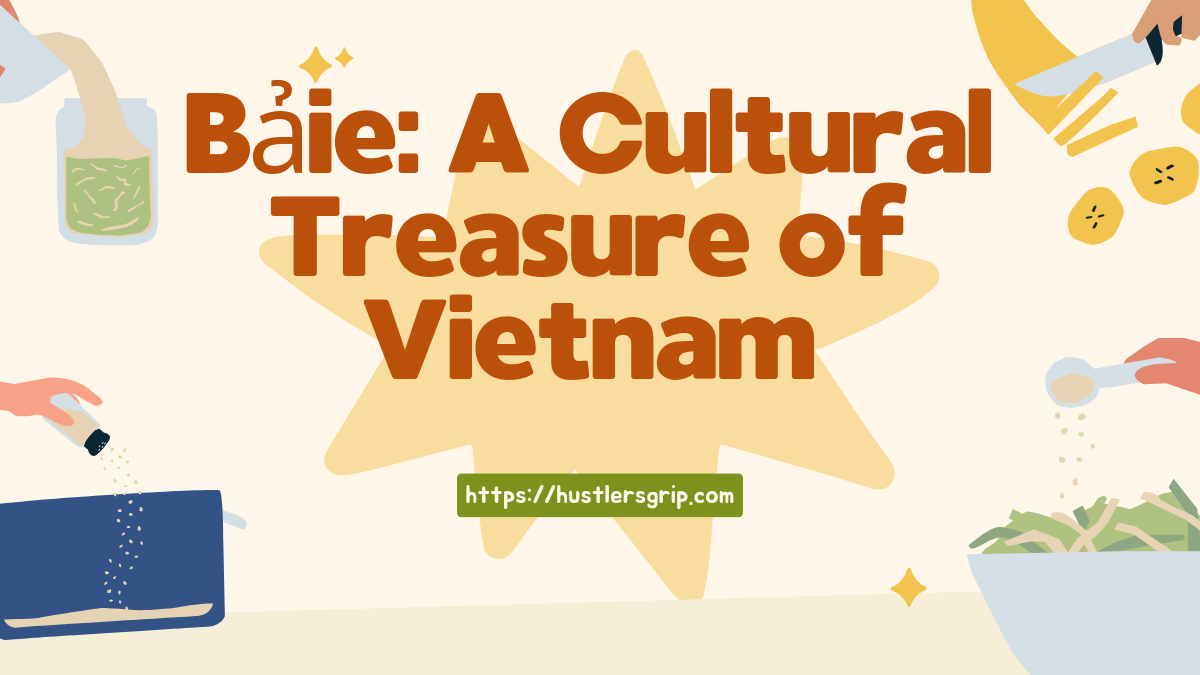Bảie: Vietnam’s Cultural Treasure
Overview
In Vietnamese culture, the term “bảie” holds considerable cultural and historical relevance. It is not merely a fruit but a symbol of tradition, camaraderie, and riches. This article goes into the varied nature and its importance in Vietnamese culture.
Historical Significance
The history of “bảie” spans back millennia, with its roots intertwined with Vietnamese mythology and ancient agricultural customs. It was cherished by ancient Vietnamese societies and featured extensively in ceremonies and rituals.
Cultural Relevance
“bảie” plays a major element in Vietnamese culture, indicating abundance, fertility, and family bonds. It is often employed in big occasions such as weddings, New Year celebrations, and ancestor worship ceremonies.
Definition and Origins
“bảie” is a tropical fruit indigenous to Southeast Asia, particularly Vietnam. It belongs to the palm family and is recognized for its enormous, fan-shaped leaves and delicious, creamy flesh. The fruit has been produced for millennia for its nutritional and medicinal advantages.
Varieties of “Bảie” kinds of “Bảie” Traditional “Bảie” kinds are generally farmed in rural places with age-old farming traditions. These species are recognized for their particular flavor and cultural relevance.
Modern Adaptations
In recent years, sophisticated agricultural technologies have led to the introduction of hybrid varieties that promise superior yield and disease resistance. While these sorts cater to commercial markets, they usually lack the unique flavor of traditional “bảie.”
Importance of “Bảie” in Vietnamese Culture
It has great importance in Vietnamese culture, operating as more than merely a culinary ingredient. It is strongly woven in the social fabric of Vietnamese society, indicating riches, longevity, and family harmony.
Symbolism and Tradition
In Vietnamese folklore, It is associated with legends and tales depicting its role as a source of food and energy. Its presence in ancient ceremonies reflects the wealth of nature and the continuity of ancestral customs.
Ceremonial Practices
During cheerful occasions such as Tet (Lunar New Year) and wedding ceremonies, “bảie” takes center stage as a sign of good fortune and riches. It is widely presented as presents to deities and ancestors, showing reverence and appreciation.
Social Significance
Beyond its symbolic relevance, It encourages social connection and collective spirit in Vietnamese communities. The act of sharing “bảie” with family and friends strengthens interpersonal bonds and sustains cultural identity.
Production Process of “Bảie”
The production of “bảie” incorporates intricate procedures passed down through centuries, embodying the agricultural tradition of Vietnam. From planting to harvesting, each step in the production process contributes to the fruit’s unique flavor and texture.
Cultivation Techniques
Traditional “bảie” cultivation relies on natural fertilizers and organic farming practices to protect soil fertility and support healthy growth. Farmers often utilize sustainable practices such as intercropping and crop rotation to increase productivity and limit environmental impact.
Harvesting Methods
The harvesting of “bảie” takes precision and understanding to obtain optimal maturity and flavor. Mature fruits carefully harvested from the palm palms and moved to processing facilities for washing and sorting.
Processing and Uses
Once harvested, “bảie” undergoes a number of processing techniques to prepare it for consumption. From fresh fruit to dried sweets, It is diversified in its culinary usage, appearing significantly in both sweet and savory cuisines.
Cultural Impact and Significance
Beyond its culinary appeal, “bảie” has a huge impact on many sectors of Vietnamese culture, from art and literature to religious rites and festivals.
Role in Celebrations and Festivals
It plays a key role in traditional Vietnamese festivities, indicating abundance and wealth. During Tet, residents deck their homes with magnificent arrangements of “bảie” leaves and fruits as a harbinger of good luck for the next year.
Influence on Art and Literature
Throughout history, It has inspired poets, painters, and crafters to build masterpieces that embody its beauty and significance. From old folk tunes to current artworks, “bảie” acts as an inspiration for creative expression and cultural preservation.
Health Benefits and Nutritional Value
In addition to its cultural relevance, It delivers a number of health benefits thanks to its rich nutritional profile and medicinal qualities.
Nutritional Profile “bảie” is a nutrient-dense fruit, providing critical vitamins, minerals, and antioxidants that enhance overall health and well-being. It is exceptionally rich in vitamin C, potassium, and dietary fiber, making it a valuable complement to a balanced diet.
Medicinal Properties
Traditional medicine practitioners regularly utilize various pieces of the “bảie” plant for its therapeutic qualities. From soothing digestive difficulties to improving immunity, It has long appreciated for its medicinal properties in Vietnamese traditional medicine.
In Conclusion
In conclusion, “bảie” serves as a symbol of tradition, prosperity, and tenacity, embodying the spirit of Vietnamese culture. It is considered a valued cornerstone of Vietnamese cuisine and culture due to its lengthy history, cultural significance, and nutritional benefits. Future developments will continue to inspire us and enhance the lives of future generations.
